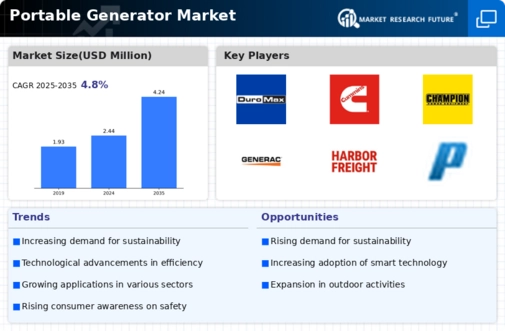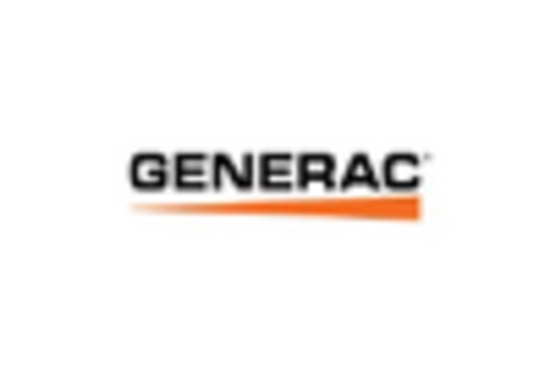Portable Generator Size
Portable Generator Market Growth Projections and Opportunities
Generators that are more feature-rich, dependable, and efficient are being developed as a result of ongoing innovation. For example, inverter technology has completely changed the game by enabling fuel-efficient generators to generate clean, steady power that is ideal for delicate electronics. Furthermore, by satisfying consumer needs for increased convenience and performance, advances in noise reduction technology, monitoring from afar, and engine design all contribute to the changing dynamics of the market. Numerous variables impact the portable generator industry, which in turn shapes its dynamics, growth trends, and consumer habits. The portable generator sector is greatly impacted by a number of market factors, including technology advancements, weather-related accidents, power system reliability, regulatory standards, financial circumstances, and shifting consumer preferences. The portable generator industry is mostly driven by improvements in technology.
In situations like these, portable generators become indispensable, increasing the requirement for these appliances to guarantee a steady supply of electricity for necessities like heating, lighting, and vital machinery. The market for portable generators is heavily impacted by the dependability of the electrical grid. Customers look for alternate power sources when there are instances of grid breakdowns, maintenance-related outages, or infrastructure problems. Portable generators are in high demand in both the home and business sectors because they provide a stable backup solution to lessen the effects of unforeseen power outages.
The market for portable generators is influenced by external variables and regulatory requirements. Manufacturers are compelled to create generators that meet strict government rules regarding noise levels, pollution, and safety requirements. These criteria impact the design, production methods, and fuel selections for portable generators, influencing consumer preferences for quieter, more environmentally friendly models that nevertheless meet power requirements while complying with regulations. The market dynamics influencing the portable generator sector are also influenced by shifting consumer tastes and lifestyle trends. Convenient, transportable, and versatile portable generators are becoming more and more in demand. Customers are looking for lightweight, user-friendly models that are suitable for a range of uses, such as emergency preparedness, camping, outdoor activities, and RV travel. In response to changing consumer demands, manufacturers are designing generators with more user-friendly features and more mobility. Market variables for portable generators are also greatly influenced by product innovation and rivalry in the industry. Manufacturers are in a perpetual state of competition as they try to set themselves apart from the competition with their price, features, and marketing campaigns. Through innovation and diversification, businesses can target particular consumer niches and gain market share by providing hybrid models, dual-fuel alternatives, or quieter operations.










Leave a Comment